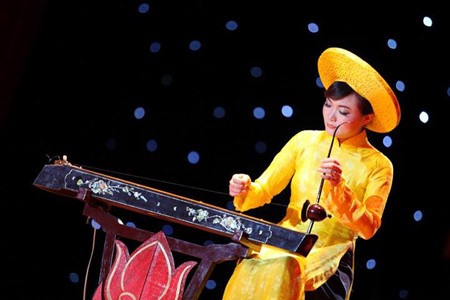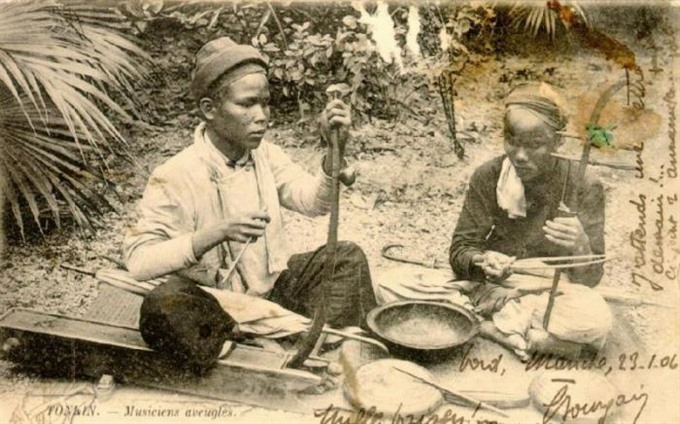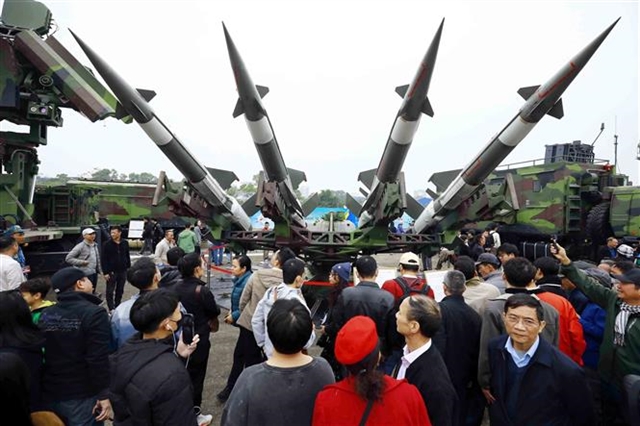 Life & Style
Life & Style

It is very imperative that relevant agencies including National Institute of Music, Folk Arts Association of Việt Nam and Việt Nam Musicians' Association work with Ministry of Culture, Tourism and Sports to propose to UNESCO to recognize đàn bầu as world heritage
 |
| Đàn bầu is the most unique instrument which represents Vietnamese people’s language and soul. – Photo baomoi.vn |
HÀ NỘI — Vietnamese agencies, including the National Institute of Music, Folk Arts Association of Việt Nam and Việt Nam Musicians’ Association, are aiming to ally with the Ministry of Culture, Tourism and Sports to propose to UNESCO to recognise đàn bầu, the nation’s monochord zither, as a world heritage.
The campaign was announced by the Chairman of the Folk Arts Association of Việt Nam, Tô Ngọc Thanh in a workshop on đàn bầu and its role in Việt Nam culture held by National Institute of Music yesterday.
The workshop drew researchers, artists and scholars including artist Thanh Tâm, Nguyễn Tiến, who have significantly contributed to promote đàn bầu, Head of National Institute of Music, Nguyễn Bình Định, artist Bùi Lệ Chi, Hoàng Anh Tú and Nguyễn Thụy Loan.
The workshop focused on the history, development the role of đàn bầu in Vietnamese culture, and it discussed the path to preserving the instrument.
“If we were to choose an instrument to represent Việt Nam’s traditional music, to introduce and promote Việt Nam an its people, đàn bầu would definitely be the one,” said Bình Định.
“Đàn bầu is the most unique instrument which represents Vietnamese people’s language and soul,” said artist Nguyễn Tiến.
History
Though it is hard to clarify the exact time when đàn bầu was created, most scholars agree that it is an indigenous instrument of Việt Nam and was used before 19th century, said Head of National Institute of Music, Nguyễn Bình Định.
Nguyễn dynasty historians noted in Đại Nam Thực Lục, (The true record of Việt Nam history) that đàn bầu was born in 18th century and Tôn Thất Dục, a scholar who was keen on learning and excellent at literature and music created this instrument, said Đặng Hoành Loan.
In Việt Nam, there also exist many legends associated with the birth of đàn bầu. According to these legends, đàn bầu were often given to warmhearted yet overworked people by Buddha so that they could make ends meet from playing this instrument. These people then spread the popularity through teaching and performance, artist Thanh Tâm said.
“This instrument was very close to life of ordinary people. It initially accompanied buskers in singing to make ends meet in the markets of rural villages and urban areas,” said Thanh Tâm.
Đàn bầu has experienced ups and downs of history--as well as reforms over different periods--but it has become one of the most unique instruments in Việt Nam.
“Among traditional instruments of Việt Nam, đàn bầu is the one that attracts the most interest from composers and researchers. This can be proved by the dominant number of works composed inclusively for đàn bầu, the number and the scope of studies on đàn bầu,” said Định.
In addition, đàn bầu performance is among the must-haves for traditional art events for international audiences and diplomats as well as big events held domestically, said Định.
In wars against France and America, đàn bầu and sáo trúc (bamboo flute) performance were also the favourites for soldiers.
“From 1970s to early 1990s, đàn bầu was performed in many countries in Europe, Africa and Americas. The performing artists often said the international audience understood more about Việt Nam and its people thanks to đàn bầu. It has been considered as a representative and symbol of Việt Nam culture,” said Định.
Đàn bầu played an important place in Việt Nam music in 1990s as there was an increasing number of people pursuing this instrument and Vietnamese artists granted awards like artists Nguyễn Tiến, Thanh Tâm, Hoàng Anh Tú, Bùi Lệ Chi, Hoàng Xuân Bình and Phan Kim Thành, said Thanh Tâm.
Many well-known composers also composed beautiful masterpieces for đàn bầu, including composer Huy Thục, Xuân Khải, Đức Nhuận and Ngô Quốc Tính, said Thanh Tâm.
Việt Nam needs to carry out some urgent solutions to protect and promote the values of cultural heritages including đàn bầu, said Định.
Relevant agencies need to co-ordinate a proposal for UNESCO recognition for đàn bầu to assert cultural sovereignty for this instrument, said Tô Ngọc Thanh.
Bùi Lệ Chi recommended that training talents in arts field must start from an early age. In addition, initiatives like granting awards or financial support to encourage artists and teachers to engage more in composing work for đàn bầu are essential. — VNS
 |
| Two blind artists playing đàn bầu in early 20th century. Initially this instrument was used to accompany blind buskers’ singing. – Photo vanhien.vn |









